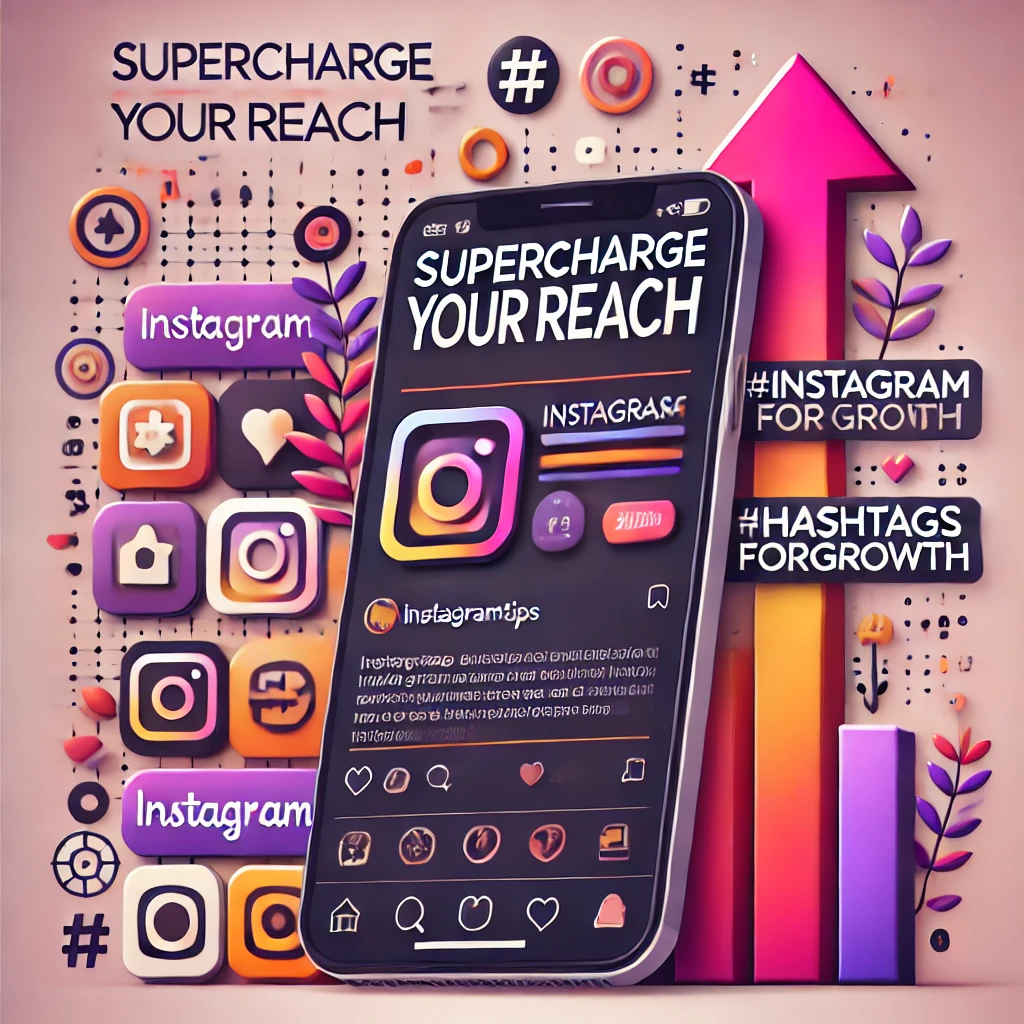Instagram Hashtags Guide: Supercharge Your Online Reach

Instagram hashtags are one of the most effective tools for boosting your online visibility and reaching a wider audience. Whether you’re a business, influencer, or content creator, using the right hashtags can make your content discoverable to potential followers who are actively searching for what you offer. In this guide, we’ll walk you through everything you need to know about Instagram hashtags and how to use them to supercharge your online reach.
1. What Are Instagram Hashtags and Why Are They Important?
Hashtags are keywords or phrases preceded by the “#” symbol, used to categorize content on Instagram. When you add hashtags to your posts, they become searchable and are grouped with other posts using the same hashtag. This allows your content to be seen by users beyond your followers, helping you attract new audiences, increase engagement, and grow your reach.
For example, if you run a fitness business and use hashtags like #FitnessGoals or #WorkoutTips, your content will be displayed in searches related to fitness, enabling you to reach users who are specifically interested in those topics.
2. Types of Hashtags You Should Use
To maximize your visibility on Instagram, it’s important to use a variety of hashtags. Here are the main types of hashtags you should consider including in your posts:
A. Trending Hashtags
Trending hashtags are popular hashtags that many users are searching for. While they can help you reach a broader audience, they’re also highly competitive. It’s beneficial to use these alongside niche-specific hashtags for a balanced approach.
B. Industry-Specific Hashtags
These hashtags are tailored to your industry and target audience. They help you connect with users who are already interested in your niche. For example, a fashion brand could use hashtags like #FashionInspo, #OOTD (Outfit of the Day), or #SustainableFashion.
C. Branded Hashtags
Branded hashtags are unique to your business or campaign. They help build community and encourage user-generated content. For example, Nike’s famous branded hashtag is #JustDoIt, and users frequently tag their content with it when posting about fitness or Nike products.
D. Location Hashtags
If your business operates in a specific geographic area, using location hashtags can help you target local customers. For instance, #NYCRestaurants or #LondonFitness can attract users in those locations.
3. How to Find the Best Hashtags for Your Content
Finding the most effective hashtags for your Instagram posts involves a combination of research and experimentation. Here’s how to discover the right hashtags for your content:
- Research Competitors and Influencers: Take a look at the hashtags your competitors and industry influencers are using. This will give you an idea of which hashtags are driving engagement in your niche.
- Use Hashtag Tools: Tools like Hashtagify, All Hashtag, and RiteTag can help you discover trending hashtags and measure their popularity.
- Explore Instagram’s Search Feature: Use Instagram’s built-in search function to find relevant hashtags. Simply type a keyword in the search bar, and Instagram will suggest popular hashtags related to that keyword.
- Create a Hashtag List: Compile a list of hashtags that are relevant to your industry, brand, and audience. Rotate these hashtags on your posts to keep your content fresh and increase its discoverability.
4. Best Practices for Using Hashtags
Now that you know which hashtags to use, let’s look at some best practices for using them effectively:
- Limit Your Hashtags: While Instagram allows up to 30 hashtags per post, using too many can look spammy. Stick to 5-10 well-chosen hashtags per post to maintain a clean and professional appearance.
- Place Hashtags Strategically: You can either add hashtags directly in the caption or in the comments section. The latter keeps your captions looking clean while still benefiting from hashtag exposure.
- Use a Mix of Hashtag Types: Combine popular, niche, branded, and location-specific hashtags to reach different audience segments.
- Monitor Hashtag Performance: Use Instagram Insights to track how well your hashtags are performing. Identify which ones drive the most engagement and adapt your strategy accordingly.
- Avoid Banned Hashtags: Some hashtags are banned by Instagram because they’ve been associated with inappropriate content. Using these can lead to reduced visibility, so always ensure your hashtags are safe and relevant.
5. Using Hashtags in Instagram Stories
Hashtags aren’t just for posts—they work in Instagram Stories, too. Adding a hashtag to your story can help it appear in searches for that hashtag, making it more discoverable to users who aren’t following you yet.
- Use one or two relevant hashtags in your Stories to maximize their visibility.
- Incorporate location-based hashtags to attract viewers from specific geographic areas.
- Experiment with the size and placement of hashtags to keep your Stories visually appealing.
6. Tracking Your Hashtag Performance
Once you start using hashtags regularly, it’s important to track their performance. Instagram’s built-in analytics (Instagram Insights) allows you to see which hashtags are driving the most engagement, including likes, comments, shares, and reach. This data can help you refine your hashtag strategy over time and ensure you’re using the most effective tags for your content.
Conclusion
Instagram hashtags are a powerful way to supercharge your online reach. By using a mix of trending, industry-specific, branded, and location-based hashtags, you can make your content more discoverable and connect with the right audience. Remember to research your hashtags, experiment with different combinations, and track their performance to continuously optimize your Instagram strategy.

9 thoughts on “Instagram Hashtags Guide: Supercharge Your Online Reach”
Comments are closed.